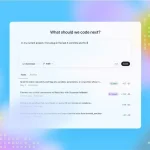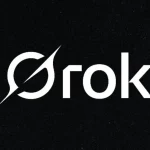Google has introduced Veo 2, a state-of-the-art AI video generator, now available to Gemini Advanced users, offering a new way to create cinematic videos from text prompts. Launched on April 15, 2025, as announced on Google’s blog, Veo 2 can produce 8-second, 720p videos in a 16:9 format, making it an exciting tool for creators looking to explore AI-generated content. But how does it compare to other video generation tools in 2025?
Veo 2’s integration into Gemini Advanced marks a significant step for Google in the AI video space, though its subscription model and initial limitations have sparked mixed reactions. For creators interested in how to make AI-generated videos, Veo 2 offers a user-friendly entry point with promising potential.
Getting started with Veo 2 is straightforward for Gemini Advanced subscribers, who must be 18 or older and part of the Google One AI Premium plan. Users can access Veo 2 via the Gemini app or web platform by selecting it from the model dropdown menu. From there, you can input a text prompt to generate a video. A notable example shared on X by the Gemini App account—“Turn the word ‘GEMINI’ into bright blue jello 3D text jumping up and down in a kitchen on a circular jello dish”—produced a vibrant video of the word “GEMINI” in jello, set against a realistic kitchen backdrop. This showcases Veo 2’s ability to handle creative prompts with lifelike visuals, thanks to its advanced understanding of physics and motion.
Veo 2 supports a variety of styles, from realistic to fantastical, and can create detailed scenes like “A wide, slow-panning shot of an enormous glacial cavern, bathed in eerie twilight,” or “An animated shot of a tiny mouse with oversized glasses, reading a book by the light of a glowing mushroom in a cozy forest den.” These examples highlight its versatility for applications ranging from social media content to storytelling. However, CNET reported that Veo 2’s initial output has been underwhelming for some, with videos lacking the refinement of competitors like Runway or Luma AI. The 8-second limit and 720p resolution may also feel restrictive for professional use.
In a comparison of AI video generators 2025, Veo 2 stands out for its accessibility within the Gemini ecosystem, supporting both web and mobile creation. Unlike some best free AI video generators like Pika or Hailuo, which offer limited free tiers, Veo 2 requires a subscription, which may deter budget-conscious users. However, its integration with Google’s tools makes sharing to platforms like TikTok and YouTube Shorts seamless, a feature not all competitors provide. For those seeking the best AI video generator, Veo 2 is a solid choice for beginners, but professionals might prefer Runway’s advanced features like 4K upscaling and camera control.
Google has also taken steps to ensure responsible use, embedding SynthID watermarks in each frame to mark videos as AI-generated and conducting red teaming to prevent harmful content. While Veo 2 currently supports only text-to-video generation, Google plans to add image-to-video capabilities in the future, which could make it more competitive. As Veo 2 continues to roll out globally, it’s poised to shape the future of AI video creation. What do you think about this new tool? Share your thoughts below, and explore more tech updates at technocodex.com.







